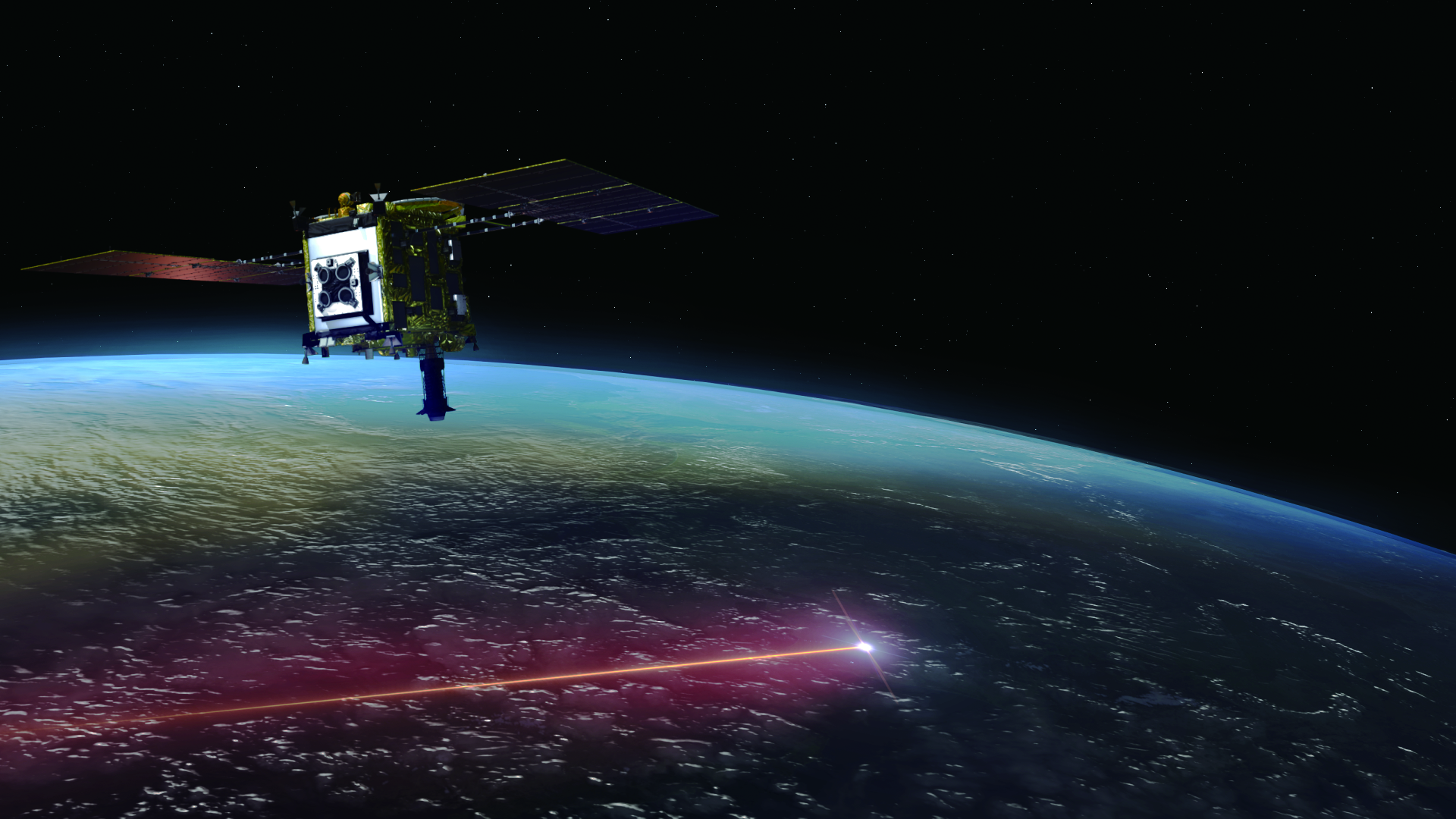
Japan's Hayabusa2 mission didn't rest on its laurels for long.
On Dec. 5, the probe delivered a capsule containing pristine samples of the carbon-rich asteroid Ryugu to Earth. Now, just a month later, the probe is officially on the move toward another asteroid, in the early stages of an ambitious and protracted extended mission.
"[Ion engine operation begins!] Today on January 5, 2021, at around 12:00 JST, Hayabusa2 started powered navigation with three of the ion engines," mission team members wrote via Twitter. (Japan Standard Time is 10 hours ahead of U.S. Eastern Standard Time, so the milestone occurred around 2 a.m. EST, or 0600 GMT).
Related: Japan's Hayabusa2 asteroid sample-return mission in pictures
Hayabusa2's first extended-mission destination is the roughly 2,300-foot-wide (700 meters) asteroid (98943) 2001 CC21, which the probe will fly by at high speed in 2026, if all goes according to plan. A more in-depth rendezvous with yet another space rock, 1998 KY26, is scheduled to follow in 2031. (Hayabusa2 won't collect any samples from 2001 CC21 or 1998 KY26.)
1998 KY26 is thought to be just 100 feet (30 m) or so wide — much smaller than both 2001 CC21 and Ryugu, which has a diameter of about 3,000 feet (900 m). The mechanical properties and other characteristics of such small asteroids aren't well understood, nor is the role that their collisions with Earth have played in our planet's history. So studying 1998 KY26 up close will yield valuable insights, Hayabusa2 team members said.
"It is expected that the world’s first proximity observation of celestial bodies less than 100m in diameter will provide useful information, not only for elucidating the history of the Earth but also for planetary defense," team members wrote in a Hayabusa2 briefing document this past September.
Get the Space.com Newsletter
Breaking space news, the latest updates on rocket launches, skywatching events and more!
Hayabusa2 will perform other tasks during this extended mission as well, including observing exoplanets and the zodiacal light — the faint glow in our solar system caused by sunlight bouncing off interplanetary dust. (You can read much more about the extended mission and its goals in the briefing document.)
The next decade-plus won't be just about the extended mission, of course. Hayabusa2 scientists have only just begun to assess and characterize the 0.19 ounces (5.4 grams) of pristine Ryugu material that landed in the Australian Outback last month.
A full investigation of this cosmic dirt and gravel could reveal key insights about the early solar system and, perhaps, the role that carbon-rich asteroids like Ryugu played in the rise of life on Earth, Hayabusa2 team members have said. Such work will involve scientists around the world — the mission team will loan some samples out — and almost certainly take decades. After all, researchers are still studying the 842 lbs. (382 kilograms) of moon material that NASA's Apollo program brought home between 1969 and 1972.
Related: We may be in a 'golden age' of sample-return space missions
Hayabusa2 — the successor to the original Hayabusa mission, which delivered a few grains of material from the stony asteroid Itokawa to Earth in 2010 — launched in December 2014. It arrived at Ryugu in June 2018 and studied the space rock in depth for nearly a year and a half, dropping several hopping rovers and a microwave-sized lander onto the asteroid over that stretch.
The main Hayabusa2 spacecraft also made two visits of its own to Ryugu's rubbly surface, collecting samples each time. One of those sampling runs snagged subsurface material freshly unearthed by a copper "cannonball" that the probe fired into the asteroid in April 2019.
Hayabusa2 left Ryugu in November 2019, successfully delivering the return capsule a little over a year later. Less than two weeks after that landing, on Dec. 16, China's Chang'e 5 mission aced its own cosmic delivery, returning fresh moon samples to Earth for the first time since the Soviet Union did so in 1976.
And there's even more sample-return action coming in the relatively near future. In October 2019, NASA's OSIRIS-REx mission collected a big sample from the carbon-rich asteroid Bennu. This material will touch down in Utah in September 2023, if all goes according to plan.
Mike Wall is the author of "Out There" (Grand Central Publishing, 2018; illustrated by Karl Tate), a book about the search for alien life. Follow him on Twitter @michaeldwall. Follow us on Twitter @Spacedotcom or Facebook.
Join our Space Forums to keep talking space on the latest missions, night sky and more! And if you have a news tip, correction or comment, let us know at: community@space.com.

Michael Wall is a Senior Space Writer with Space.com and joined the team in 2010. He primarily covers exoplanets, spaceflight and military space, but has been known to dabble in the space art beat. His book about the search for alien life, "Out There," was published on Nov. 13, 2018. Before becoming a science writer, Michael worked as a herpetologist and wildlife biologist. He has a Ph.D. in evolutionary biology from the University of Sydney, Australia, a bachelor's degree from the University of Arizona, and a graduate certificate in science writing from the University of California, Santa Cruz. To find out what his latest project is, you can follow Michael on Twitter.
